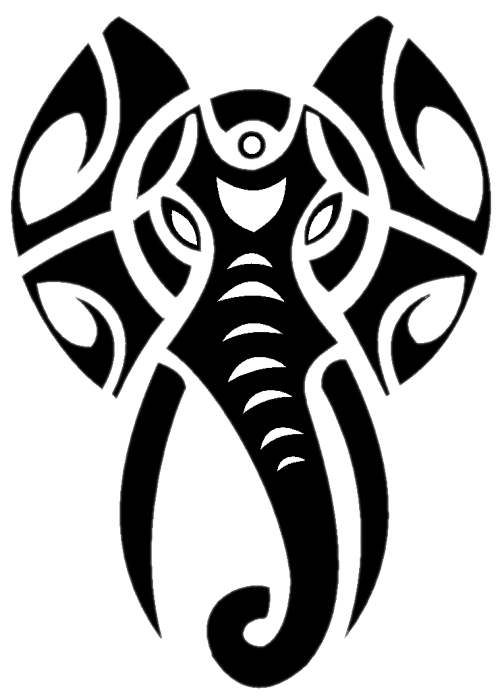|
|

•
•
•
•
•
•
•
•
•
•
•
•
•
•
•
•
•
•
•
•
•
•
•
•
•

|
|


Basic DescriptionThe logo consists of an African elephant done in a style reminiscent of the Pacific Islander / Polynesian / Maori style of tatu art. The dot on the elephant’s forehead represents the “third eye,” the point in the forehead considered to be the seat of knowledge in many cultures. The seven wrinkles in the trunk represent the value of the number 7 in many cultures, such as being lucky or reflective of the 7 chakras. Being an elephant, the symbol also alludes to the Buddha and the Hindu deity Ganesha / Ganesh. The logo itself reflects multiculturalism in that the influences on the image come from a wide array of cultures. Teacher LearningThe elephant’s trunk is one of the most diverse biomechanical feats of engineering in existence. It can both fell a tree and pick up a needle. No single man-made machine can replicate this feat — anything similar would be a composite of several mechanisms. Likewise, teachers must use a variety of approaches in working with students from diverse cultures. At times these may be blatant (strong) and other times subtle (dexterous). This broad spectrum of ability reflects the way professional development should help teachers employ a broad range of techniques — some strong, some subtle — in working with and being aware of differences in students’ cultural backgrounds. Student LearningAn elephant’s height can be considered reflective of high standards. In cartoons, elephants are often depicted as having rather stodgy personalities — like that of the “British commander” types seen in Dumbo and Disney’s adaptation of Tarzan (if I remember correctly). These personality types are considered to be the product of high standards that are considered stereotypical of both British and military upbringing. The elephant can also be related to the principles of student learning in that my own interest in elephants, as well as the other cultural influences that went into the design, came from a host of personal experiences and the opportunity to travel and view contexts outside the social, political, and economic ones in which I typically lived. Some of these were through extra-curricular and co-curricular activities that enhanced my global perspective and academic achievement. Much like my own experiences, I like to expose students to other cultures through a variety of means. For example, I showed a DVD on paragliding in the Himalayas to the students who showed up for school on the day of a beloved classmate’s funeral. Classes were so sparse, there was no purpose in actually doing anything academic. Even though there was no point in moving the chemistry and geology classes forward, I thought the documentary would give students a glimpse into the culture of a people they were not familiar with, while also showing those people experiencing something from Western culture (the climbers were teaching sherpas to paraglide). Intergroup RelationsIn the same way that students should be aware of cultural differences and be able to integrate, even celebrate, those differences into the identity of a given class as a unified group — perhaps even a culture of its own, e.g. the “culture” of 5th period chemistry — the logo draws upon multiple cultural influences, consolidating them into a single, unified whole that preserves those elements while taking on a life of its own in the combination of those elements. School Governance,
|
|
Planet Gnosis is directed by Dr. Freddie A. Bowles, Assistant Professor of Foreign Language Education in the Department of Curriculum and Instruction, the University of Arkansas at Fayetteville. Planet Gnosis is dedicated to the exploration of education and teaching. It is a cybersite of CornDancer.com, a developmental website for the Mind and Spirit. Submissions are invited. |
|
|


